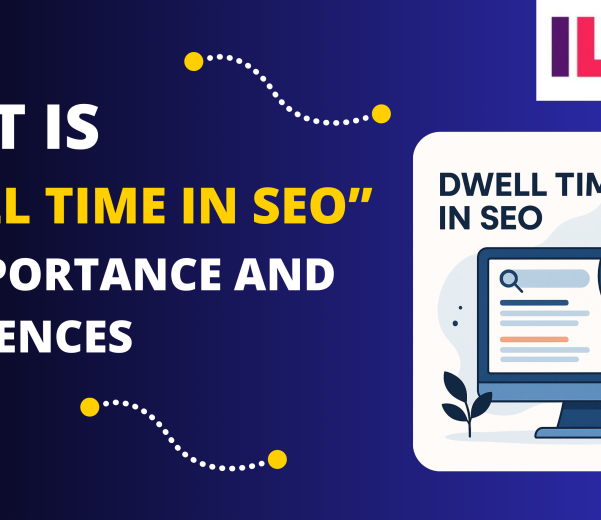Introduction: Unpacking the Keyword Confusion
In the vast and ever-evolving world of Search Engine Optimization (SEO), data is king. Every decision, from writing a blog post to structuring a website, is guided by metrics. Yet, two fundamental terms—Search Volume and Search Results—are frequently misused, often treated as interchangeable concepts by beginners and even some seasoned marketers. This common confusion can lead to significant missteps in keyword strategy, wasted resources, and ultimately, poor organic performance.
This blog post is designed to clear the air once and for all. We’ll dive deep into the definitions, explore the core differences, and, most importantly, show you how to leverage both metrics together to build a powerful and effective keyword research strategy. Why is this distinction crucial? Because understanding the difference between how many people are asking a question (Search Volume) and how many pages are trying to answer it (Search Results) is the key to unlocking hidden SEO opportunities and conquering tough competition.
What is Search Volume? The Metric of Demand
Search Volume is a metric that quantifies the estimated number of times a specific keyword or phrase is entered into a search engine (like Google) within a designated time period, typically measured on a monthly basis.
In simple terms, Search Volume is a direct proxy for user interest or demand. A high search volume indicates a popular topic that a large audience is actively searching for. It tells you that there is a significant, measurable audience interested in the information, products, or services related to that keyword.
How Search Volume Reflects Demand:
- High Volume: Suggests high popularity and potential traffic (e.g., “best smartphones 2024”).
- Low Volume: May suggest a highly niche topic, a new concept, or a very specific question (often found in long-tail keywords).
Tools Used to Measure Search Volume:
Search engines do not publicly share their exact search counts, so SEO professionals rely on third-party tools that aggregate and model this data:
- Google Keyword Planner (GKP): Google’s own tool, which provides aggregated range data.
- Ahrefs, SEMrush, Moz, Ubersuggest: Industry-leading platforms that provide more granular, estimated monthly search figures and trend analysis.
Example in Action: If the keyword “Interior design ideas” has a Search Volume of 10,000 monthly searches, it means that an estimated ten thousand people searched for that exact phrase over the last month. This indicates a high level of demand.
Read Related – 50+ Essential Google Analytics 4 (GA4) Interview Questions & Answers for 2025
What are Search Results? The Metric of Competition
Search Results, also known as the Result Count or Allintitle count (when using advanced operators), refers to the total number of unique web pages that the search engine (Google, in most cases) has indexed and deemed relevant to a particular keyword or query.
Unlike Search Volume, which measures demand, Search Results is the ultimate indicator of supply and, by extension, the level of competition. It tells you how many pieces of existing content—blogs, product pages, videos, forums—are already vying for a top spot for that specific search query.
How Search Results Show Competition:
- High Result Count: Signifies extremely high competition, meaning hundreds of thousands, or even millions, of pages are fighting for visibility (e.g., searching for a single common word).
- Low Result Count: Indicates a less saturated topic, suggesting a potential gap in the market or a more focused, niche opportunity.
How to Find the Result Count:
This is the simplest metric to find. You simply type the keyword into the Google search bar and look at the number that appears directly below the search bar, usually next to the word “About” or “Results.”
Example in Action: If you search for “Interior design ideas” and Google reports “About 200,000,000 results,” this massive number signifies extremely high competition. Two hundred million indexed pages are technically relevant to that keyword.
Key Difference Between Search Volume and Search Results
The fundamental mistake is conflating these two distinct metrics. Search Volume is a measure of the audience, while Search Results is a measure of the players.
| Feature | Search Volume | Search Results |
| Meaning | User Demand (How many people are asking?) | Available Content (How many pages are answering?) |
| Source | Keyword Tools (GKP, Ahrefs, SEMrush) | Google Search Engine Results Page (SERP) |
| Indicates | Popularity and Potential Traffic | Supply and Competition Level |
| Usage | For keyword planning and prioritizing topics | For competitiveness checks and opportunity spotting |
| Ideal Scenario | High (More people searching) | Low (Less content competing) |
Analogy: Think of Search Volume as the size of the fishing pond, and Search Results as the number of other fishing boats already on the pond. You want the biggest pond with the fewest boats!
Read Related – Tips to Get Your Google My Business Listing on Top
Why the Confusion Happens
The confusion is understandable, especially for those new to the field, due to a few factors:
- Similar Terminology: Both terms use the word “Search” and relate directly to the activity happening on a search engine.
- Keyword Proximity: In many SEO dashboards, both the estimated monthly search volume and the competitiveness score (which is often derived from the result count or difficulty) are displayed side-by-side, making them appear linked in function.
- Beginner Misinterpretation: A common beginner error is seeing a high search volume and immediately assuming it’s a good target without checking the competition (Search Results). Conversely, they might dismiss a low-volume keyword without realizing it has virtually zero competition, making it an easy win.
How Both Metrics Work Together in Smart SEO
Neither Search Volume nor Search Results is sufficient on its own. The power of effective keyword research lies in using them in combination to find the sweet spot—keywords that have good demand but manageable competition.
The Four Keyword Scenarios:
- High Volume + High Results (Red Zone): The biggest, most competitive keywords (e.g., “insurance,” “marketing”). Very difficult to rank for unless you are a major authority.
- Low Volume + High Results (Worst Zone): Niche topics with strangely high competition. Avoid these; the low traffic isn’t worth the effort.
- Low Volume + Low Results (Opportunity Zone): The gold mine! These are often long-tail keywords (e.g., “best way to clean copper kitchen sink naturally”). They bring low individual traffic but are easy to rank for, providing quick wins and establishing authority.
- High Volume + Low Results (Unicorn Zone): Rarely found but represent a breakthrough opportunity—a new trend or a highly searched term that the existing content landscape hasn’t adequately addressed.
By assessing a keyword across both dimensions, you move beyond mere popularity and focus on rankability.
Read Related – What is Dwell Time – Its Importance and Differences
Tips for Smart Keyword Research
To transition from confusing data points to strategic SEO execution, adopt these practices:
- Prioritize Search Intent: Before looking at numbers, ask: “What is the user really looking for?” Is it information (informational intent), a product (commercial intent), or a specific website (navigational intent)? Content that matches intent ranks better, regardless of volume.
- Combine Metrics for Keyword Difficulty: Use Search Volume, Search Results, and the Keyword Difficulty (KD) score provided by SEO tools. The KD score is the tool’s attempt to combine these factors, along with backlink profile data, into a single measure of rankability.
- Embrace Long-Tail Keywords: These are phrases of three or more words (e.g., “what is the difference between search volume and search results”). They typically have low search volume but also extremely low result counts, making them easy to rank for and leading to highly qualified, conversion-ready traffic.
- Analyze the SERP Manually: Always look at the top 10 Search Results. Are they high-quality, authoritative sites? Or is the content poor and irrelevant? A high Result Count is less intimidating if the quality of the competing content is low.
Conclusion: The Smart SEO Decision
The distinction between Search Volume and Search Results is foundational to successful SEO. Search Volume is your measure of market demand—the number of potential readers. Search Results is your measure of market competition—the number of rivals for that attention. Confusion stops here. By understanding and strategically combining both metrics, you gain the clarity needed to step away from blindly targeting the most popular keywords and instead focus on the most rankable and profitable opportunities. Smart SEO is about targeting the audience you can win, and that requires knowing both how many people are looking and how many pages are competing. Master this distinction, and you will master your organic growth strategy.




